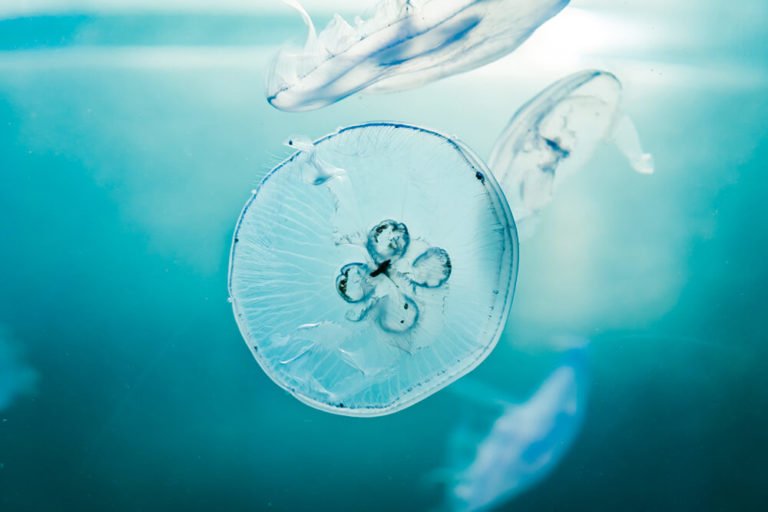Stung by a Jellyfish While Scuba Diving?

Picture this. You’re enjoying your dive when suddenly, you feel an intense burning sensation on your leg. You look behind you and see this translucent creature float away—you’ve been stung by a jellyfish. Before the panic sets in, here’s what to do if this happens in real life.
WHICH TYPE OF JELLYFISH DO YOU SEE?
It’s best to know which kind of jellyfish you encounter. There’s a huge variety of jellies—with some as large as us, and others as small as a grain of salt. Out of the 2,000 species, only about 70 can hurt humans.
You may recognize MOON JELLYFISH (or “moonies). They’re small and translucent, found in most bodies of water like the Atlanic, Pacific, and Indian Oceans. And, their sting is mild.
Unfortunately, there are many jellyfish with stings that well… sting. One of the more painful jellyfishes is the LION’S MANE (also known as the “hair jelly” and the “giant jelly”). Their color depends on their size, but their identifying trait is the long tentacles that look almost like a mane. This species resides in cooler waters like the Arctic, Pacific, and the Northern Atlantic Oceans. They can have up to thousands of tentacles, making them dangerous, but not fatal. Their stings are painful, resulting in swelling and redness.
Believe it or not, there’s a type of jellyish that’s the deadliest creature in the ocean. Meet the BOX JELLYFISH. It has enough venom to kill 60 people. They have a cube-like shape and from each of the four corners, hangs a slender stalk that has a few long tentacles. Although this notorious species is largely restricted to the Indo-Pacific region, they can also be found in tropical and subtropical areas.
WHAT TO DO IF YOU GET STRUNG?
If you get stung (even if it’s mild), remain calm and begin your ascent. It may be hard not to panic in these situations, but it’s important to keep the basic safety practices in mind.
Treat your jellyfish sting by rinsing the affected area with vinegar, rather than freshwater. Then remove all visible tentacles and immerse the infected area into hot water. You can also use a cold pack to alleviate pain.
Now, look for signs of an allergic reaction. Symptoms include shock, severe pain, coughing, hives, headache, dizziness, nausea and more. You may also notice swelling of the lips, tongue, mouth, throat, neck, ears, eyelids, palms, or soles of the feet. If you see severe symptoms, you should seek immediate professional attention.
While most jellies are harmless, some pack quite a punch. When stung underwater, make sure to seek help for more severe stings and follow these treatment methods to alleviate mild stings.
